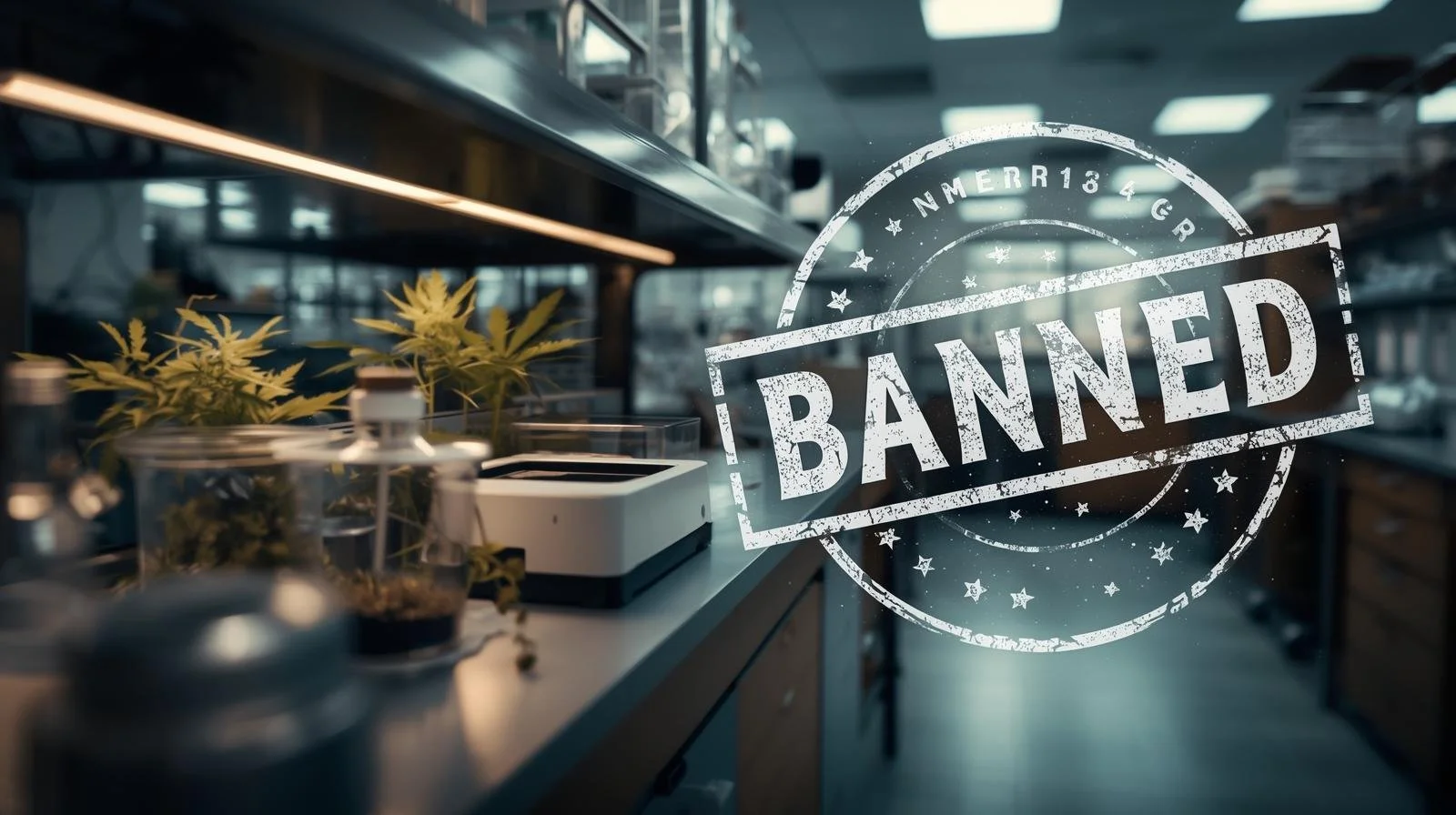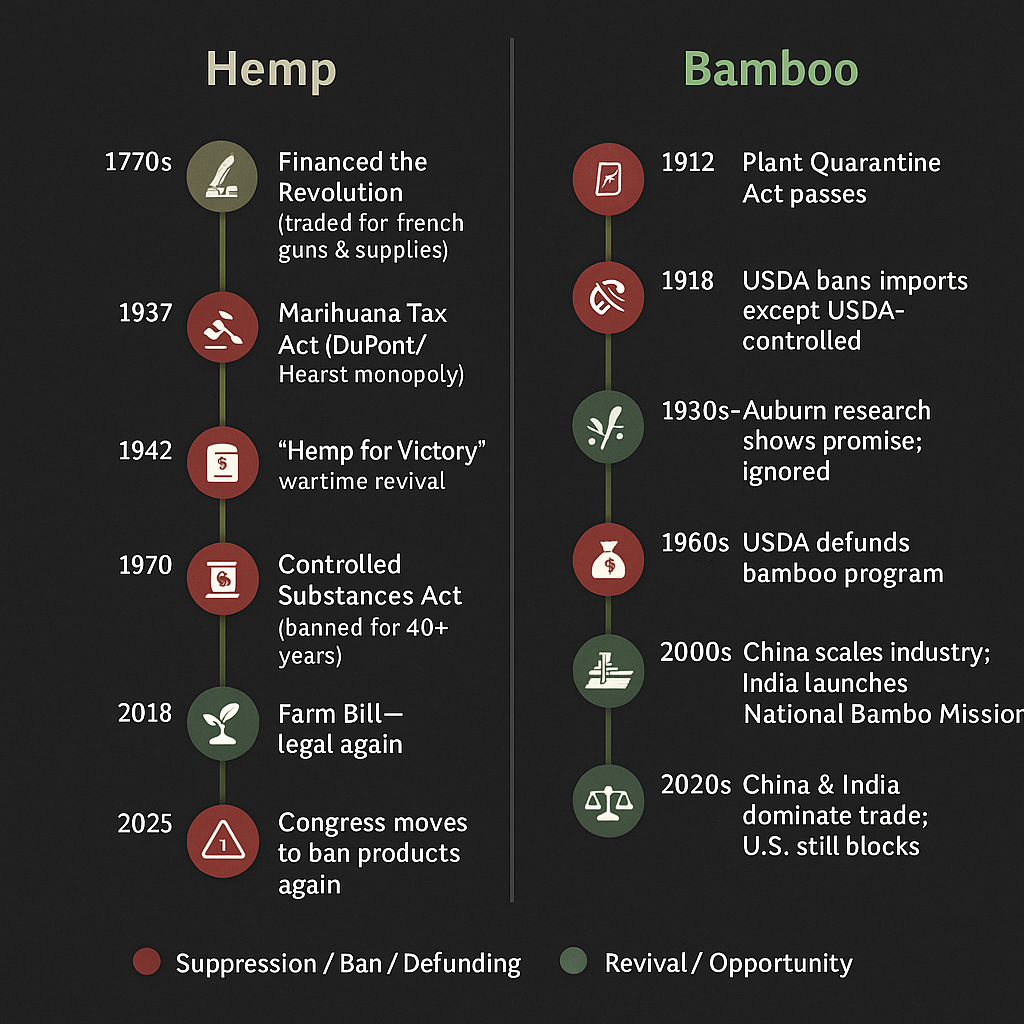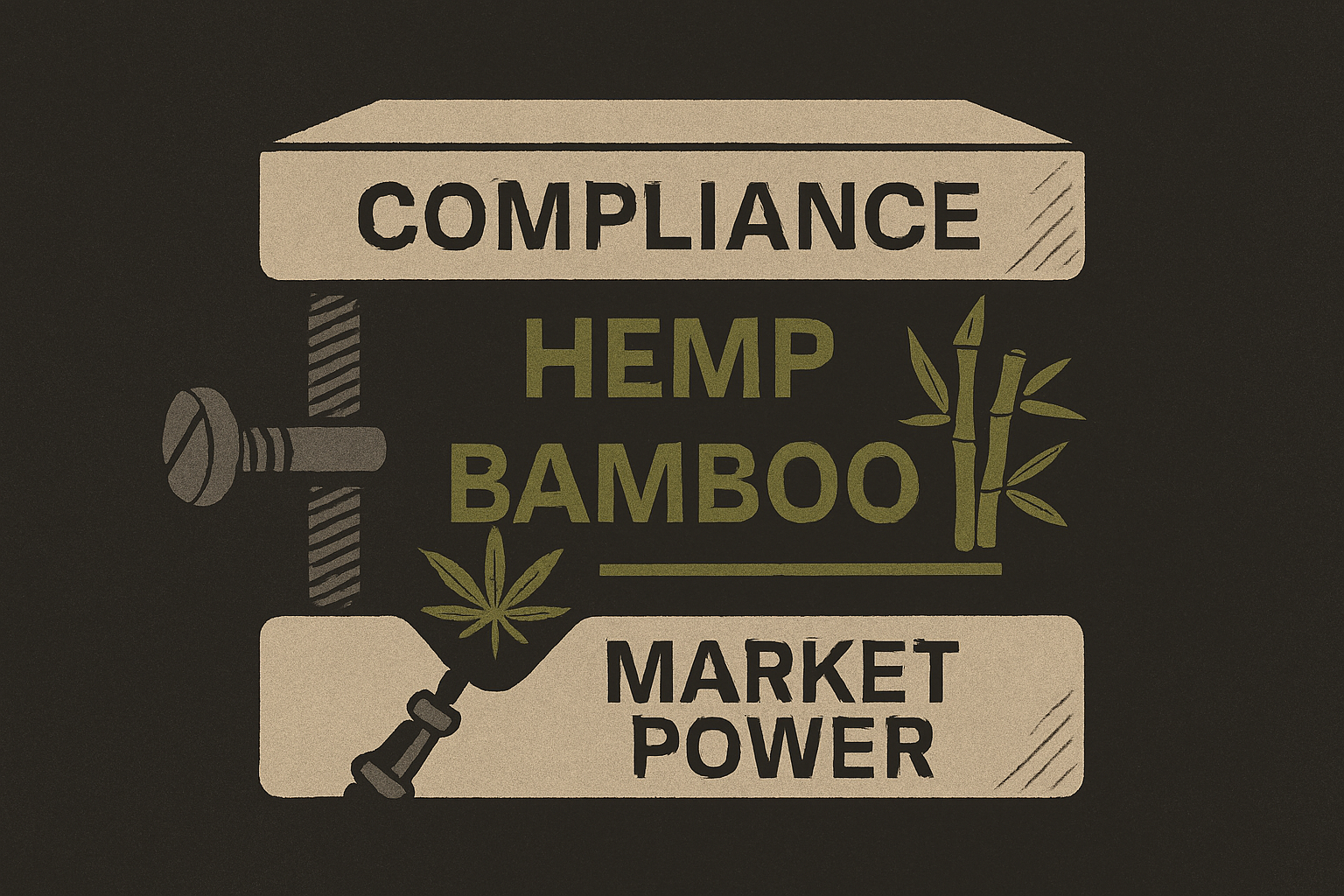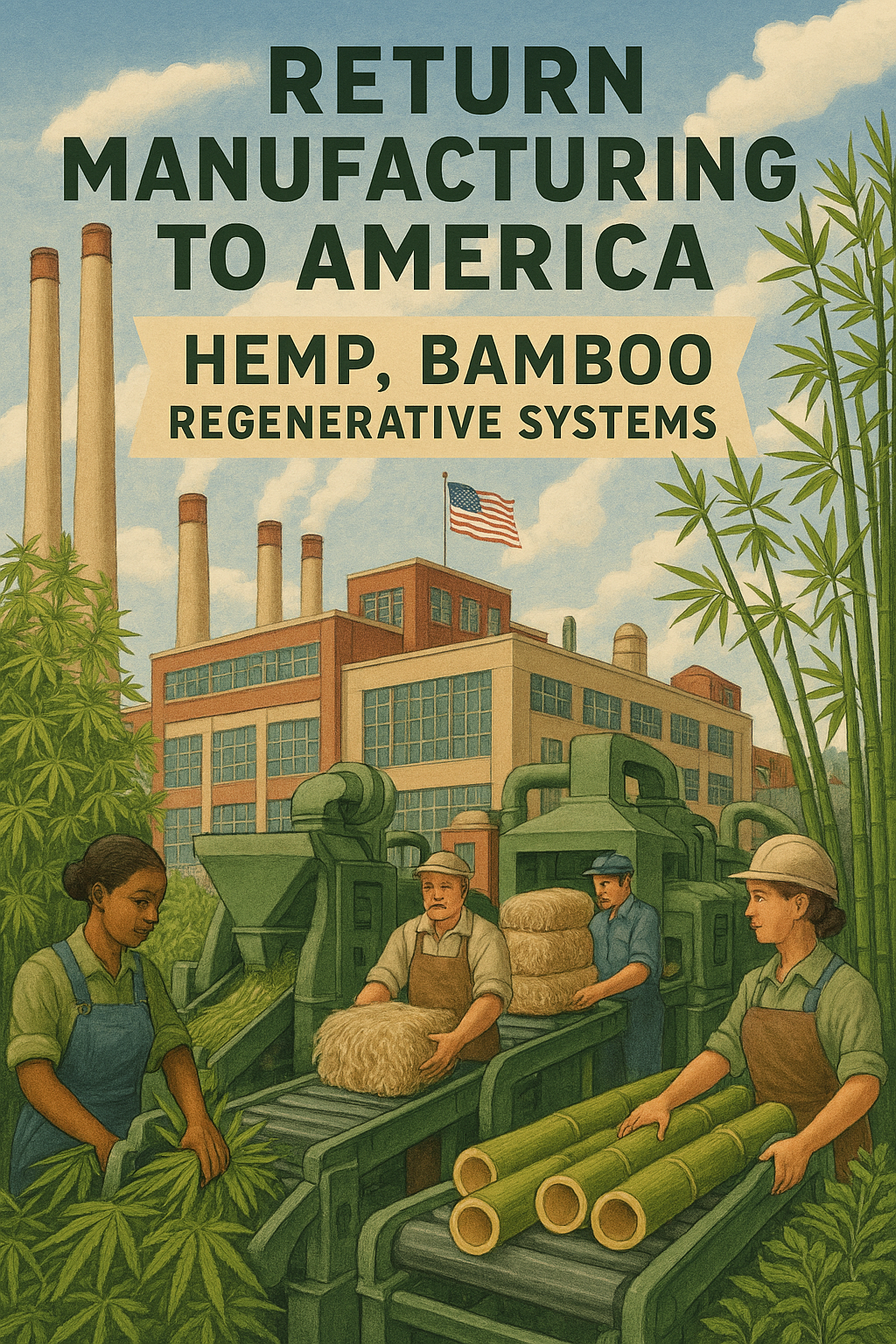The Anatomy of the Hemp Scam: How Congress Set Hemp Up to Fail
The Setup - They Said, “Plant It!”
In 2018, Congress told farmers: “Go ahead, plant hemp. It’s legal now.”
Farmers listened. They paid license fees, bought seed, built barns, and mortgaged their futures. USDA launched compliance programs. Universities ran research trials. Taxpayers funded it all.
In 2018, Congress passed the Farm Bill legalizing hemp, defining it as cannabis with less than 0.3% delta-9 THC by dry weight. Farmers paid license fees, bought seed, built barns, and mortgaged their futures. USDA launched compliance programs. Universities ran trials. Taxpayers funded it all.
It felt like a rebirth. After decades underground, hemp, one of the oldest and most strategic crops in American history, was back.
This wasn’t a fringe plant. As I wrote in Evolution Mine (2019), “A country founded upon protest was financed by hemp.” The American Revolution was bankrolled with it: colonial hemp traded to France for guns, ammunition, and naval supplies. Washington and Jefferson grew it. Some colonies even required it. Hemp was currency, supply line, and survival rolled into one. Hemp wasn’t a hippie side hustle. It was America’s survival crop.
But the same government that legalized hemp in 2018 is now moving to kill it in 2025. Only in America do people spend millions teaching seeds to behave, then pass a rule that says, “Nice harvest! Now light the match.”
The Switch
Fast-forward to 2025. Hemp is no longer a toddler. It’s a $5.5 billion Texas market alone! Hemp seltzers sliding into beer coolers, hemp plastics threatening oil, cannabinoids biting into pharma’s fortress. But once hemp grew up and showed it could play with the big kids, Daddy panicked.
The USDA reported 20.8M pounds of floral hemp worth $386M in 2024 (just $18.56 per pound USDA Hemp Report, 2024). Why so low? That’s because USDA blended cheap biomass ($2/lb) with premium flower ($330/lb). Whitney Economics showed that at real flower pricing, the crop would be worth $6.9B wholesale—not $386M (Whitney Economics, 2024). That’s not oversight. That’s a data choice that depresses markets and discourages loans, insurance, and infrastructure investment.
At the same time, Rep. Mary Miller proposed an amendment to redefine hemp as “total THC” (including THCA, which isn’t intoxicating) and restrict cannabinoids. Advocates warn this would ban up to 90–95% of hemp products. It hasn’t passed, but it’s proof of intent. Similar bills have failed, but this one is still in play (Congressional Record, 2024).
Texas didn’t wait. SB 2024 bans hemp vapes statewide starting September 1, 2025. That wipes out one of the fastest-growing sales channels overnight. One of the fastest-growing consumer categories, gone with a stroke of a pen. Meanwhile, hemp drinks draw a crowd and lawmakers play whack‑a‑mole with foam hammers and press releases.
This isn’t oversight. It’s a classic move: build the house, invite you in, then change the locks.
Why Would USDA Want Lower Valuations?
Policy Cover for Congress
If USDA says floral hemp is a $386M blip, lawmakers can argue it’s not worth protecting.
That data then gets used in hearings and reports to say: “See? Hemp is tiny. Farmers barely make anything from cannabinoids.”
Suppressing Farmer Leverage
Banks and insurers rely on USDA data to assess crop value.
If USDA says floral hemp is worth pennies, farmers can’t get loans, can’t insure crops, and can’t secure lines of credit.
That forces many small operators out and leaves only well-capitalized incumbents (or foreign players) in the game.
Industry Gatekeeping
Lower valuations let federal agencies steer funding toward “safe” uses (fiber, grain) while making floral hemp look like a risky side hustle.
That keeps the higher-margin cannabinoid market politically marginalized — even though it’s what consumers are actually buying.
The Real-World Impact
No Loans, No Expansion: If you’re a hemp manufacturer trying to finance new equipment, USDA’s $18/lb number tells banks your crop is low-value. They won’t lend against it.
Insurance Gaps: Insurers underwrite based on USDA benchmarks. An undervalued crop looks too risky to cover.
Investor Reluctance: Institutional money avoids industries that federal data paints as “small potatoes.”
Result: farmers and manufacturers get starved of capital, even as consumers create multi-billion-dollar demand.
the Contradiction
Here’s the nuclear contradiction no lobbyist can spin:
While USDA is pumping $35 million into Climate-Smart Hemp projects — funding farmers, researchers, and universities — Congress is simultaneously pushing amendments to ban hemp-derived products.
While DOE has earmarked over $500 million for bio-based feedstocks like hemp and bamboo, state legislatures are banning the very products that make those feedstocks viable in consumer markets.
Washington is literally funding farmers to grow what lawmakers are banning them from selling.
That’s not a policy gap. That contradiction is the sabotage blueprint.
Step 3: The Cover Story
Washington’s escape hatch is built in:
“We gave you programs. We funded research. We tried. Look what the kids did with it: gas-station gummies, neon vapes, sketchy seltzers.”
That’s plausible deniability. They set the rules, moved the goalposts, then blamed farmers and consumers for “misbehavior.”
As I wrote in Evolution Mine: “All modern change was enacted and sustained by the means to finance change. Profit is key to all change. The use of profits defines whether change is good or bad.”
Hemp was profitable—and that made it dangerous.
Step 9: The Vape Distraction
The real war is about stopping hemp and bamboo before they mature into bioplastics, batteries, and industrial silicates. Kill the crop now under cover of vape panic, and you don’t just wipe out today’s revenue streams — you bankrupt tomorrow’s innovators.
Here’s the kicker: when those hemp and bamboo startups collapse, their patent applications get abandoned. Lapsed filings, stalled IP, orphaned breakthroughs. And who scoops them up? Big Petro and Big Pharma. The very incumbents who funded the bans raid the wreckage, locking regenerative tech behind their portfolios.
Contradiction sharpened: the same government that DOE funds to study bio-feedstocks lets Congress kill the markets, then watches as the patents migrate back into the petrochemical empire.
That’s not “protecting children.” That’s protecting monopolies, and ensuring the next hemp battery or bamboo composite never leaves the lab.
Speaking of Distractions, Enter Bamboo - The Forgotten Twin
Hemp drew fire because of its confusion with cannabis. Every headline called it “marijuana’s cousin,” every lawmaker waved reefer madness flashcards. That cultural baggage made it a target.
But there’s another commodity — one without the smoke, without the stoner stigma, without the joint at the gas station. Bamboo.
Bamboo has been paired with cannabis in wellness circles for millennia, burned in ceremonies, coupled with hemp in healing sessions. But unlike hemp, bamboo never had THC confusion to blame. Its suppression came straight from monopoly politics.
1918: USDA invoked the Plant Quarantine Act, banning bamboo seed imports. Access was locked under USDA control.
1930s–40s: Auburn University research proved bamboo pulp could outperform pine. Washington shelved it.
1960s: USDA defunded bamboo entirely.
Meanwhile: India launched its National Bamboo Mission, China scaled exports, and today FAO/INBAR track bamboo on 35M+ hectares.
Hemp was stigmatized. Bamboo was ignored. But the result was the same: U.S. farmers shut out, rivals abroad turning it into a strategic commodity.
Step 4: The Payout
Who benefits when hemp loses?
Big Pharma → patented synthetics, priced like insulin.
Big Plastic & Petro → no hemp bioplastics cutting into their margins.
Liquor Cartels → hemp seltzers shelved just as they start competing with White Claw.
Foreign Rivals → India’s National Bamboo Mission expands, and FAO/INBAR reports bamboo covers 35M ha globally. China dominates exports.
The contradiction sharpens: America funds the research, buries the product, and hands the commodity race to rivals.
Step 5: The Fallout
Farmers lose barns, crops, and mortgages.
Researchers watch years of taxpayer-funded work shredded.
Consumers don’t quit—they go underground. The black market booms, margins fatten, safety nets vanish.
America weakens. While Congress plays whack-a-mole with vapes, China and India are stockpiling the materials of the future: bamboo silicates for solar panels, hemp graphene for batteries, and bio-composites for vehicles and armor (MDPI Materials Journal, 2023).
This isn’t just agriculture. It’s national security.
Step 8: The WWII Lesson
Wars of the past were lost chasing oil. Japan struck Pearl Harbor after U.S. cut off petroleum. Germany invaded east to seize oil fields. The U.S. prevailed because it secured supply.
When fiber shortages hit, USDA rolled out Hemp for Victory, urging farmers to plant 400,000 acres. Hemp rope and canvas held the Navy together.
But when the war ended? Hemp was buried. The contradiction repeats: fund it in wartime, bury it in peacetime.
And what about bamboo? Auburn research in the 1940s proved bamboo pulp could outperform pine for paper and packaging. But instead of scaling it, USDA buried the program. The contradiction repeats: in crisis, regenerative crops save us; in peacetime, petro and timber monopolies bury them.
Here we are in 2025. DOE invests in biobased feedstocks like hemp and bamboo, but Congress and the states ban the markets. Different war, same playbook.
The SME Sandwich
Bamboo & Hemp isn’t unique. The same bait-and-burn is being played on every small and mid-sized enterprise in America.
Take the Inflation Reduction Act’s 45X tax credits. On paper, they’re supposed to unleash a wave of clean-energy manufacturing. Capital flowing to new players. Domestic jobs. Supply chain revival.
But the fine print is the trap. To actually claim those credits, an SME has to:
Prove Domestic Content: affidavits for every bolt, screw, and raw input, even when suppliers refuse to disclose.
Meet Prevailing Wage & Apprenticeship mandates: great goals in theory, but one missed record-keeping form can sink an entire project’s financing.
Clear FEOC screens: prove no “foreign entity of concern” exposure in your supply chain, even though 90% of global solar/battery inputs still originate in China.
For billion-dollar incumbents, this is nuisance paperwork. For SMEs, it’s existential. A startup with five employees can’t hire a compliance department, legal team, and international trade auditors just to access a credit that’s supposed to help them scale.
Contradiction again: the same government that dangles tax credits as lifelines designs compliance thresholds to make them unreachable for the very businesses they were advertised to empower.
And this isn’t abstract. SMEs in clean energy, construction, and advanced manufacturing are already calling it the “SME Sandwich”:
Squeezed from the top by compliance hurdles they can’t afford.
Squeezed from the bottom by incumbents with cash, lobbyists, and patience to wait them out.
Bamboo and Hemp’s bait-and-burn is just the farm version of the same scam. Congress legalizes just enough to collect fees, funds a few research grants, then buries the market with definitions and bans. Same script, different commodity.
The Hack — How We Fight Back
Protests won’t win this. They want you stuck outside yelling while lobbyists write rules inside.
The only path is a pincer movement:
💳 Wallet Flank — The Buycott
Every hemp plastic, bamboo composite, and hemp drink you buy is a vote against petro and pharma. Every dollar pulled from oil-soaked supply chains and pushed toward regenerative ones is a weapon.
🖊️ Signature Flank — The Petition & Pressure
Hearings, petitions, coordinated pressure. Politicians don’t fear tweets — they fear broke and pissed-off constituents. This sabotage created both. Time to weaponize it.
⚙️ The SME Hack — Combine Power
Small and mid-sized enterprises (SMEs) face the same trap — 45X credits dangled, then buried under compliance thresholds only billion-dollar incumbents can clear. Alone, an SME gets crushed in the Sandwich. Together, they can flip the leverage.
Document together → shared compliance templates, pooled legal/accounting.
Negotiate together → bloc purchasing, bloc credit transfers, bloc insurance.
Lobby together → one SME voice gets ignored; 10,000 voices aligned on hemp, bamboo, and local manufacturing become a voting bloc no politician can dodge in 2026.
This isn’t about joining hands and singing. It’s about building the same machinery incumbents use — only this time to defend our future, not bury it.
The contradiction is clear: Washington funds the future, then smashes the door shut. The hack is to push it back open with wallets, signatures, and SME bloc power.
The Bigger Puzzle
So was it arrogance — Congress thinking hemp was just hippie rope? Or sabotage — set up to fail from the start?
Either way, the contradiction tells the story: Washington funds the crop, buries the market, and hands the future to monopolies and rivals.
And hemp isn’t alone. Bamboo has lived the same cycle for over a century. USDA locked it down with the Plant Quarantine Act of 1918, strangled research just as Auburn proved it could outperform pine pulp, then abandoned it in the 1960s while China and India scaled bamboo into a strategic $60B industry backed by national missions and FAO/INBAR recognition. America still has no national bamboo program.
The pattern is bigger than crops. It’s the same playbook that offshored entire petrochemical supply chains. In the 1970s, Nixon rolled out the EPA and OSHA with one hand — and with the other, handed oil, chemical, and plastics production to foreign soil under the banner of “compliance.” Dirty refineries and toxic plants were pushed abroad while American demand grew. We didn’t abolish the petrochemical empire; we globalized it.
Hemp and bamboo are just the new front line of that same game. Keep them legal just long enough to collect fees and fund studies. Starve them with bad valuation data and compliance traps. Then bury them in bans and hand the commodity crown to Beijing and Delhi — the same way petro went to Riyadh, Caracas, and Lagos.
The real contradiction isn’t whether hemp “works” or bamboo “scales.” It’s that we’ve built a system where the U.S. pays for the science, suppresses the industry, and then imports the finished goods from rivals who aren’t stupid enough to kill their own future.
Hemp is the canary in the coal mine. Bamboo is the second bird in the cage. SMEs, solar, steel; every domestic industry caught between paperwork at home and scale abroad are next.
Closing Call
History is on repeat. Sabotage at home, monopoly abroad, and politicians hiding behind “protect the children” while burying the future.
The difference this time is us. We don’t have to play the rigged game. We don’t have to wait for Washington to bless us with scraps.
That’s why Now We Evolve exists — to connect the dots, expose the sabotage, and give you the playbook. And that’s why I wrote Evolution Mine — because the same pattern that killed hemp and bamboo before is happening again, and it only stops if we do.
👉 If you’ve read this far, you’re not just an observer. You’re already in the fight. Join us. Share the receipts. Sign the petitions. Redirect your wallet. Build with SMEs.
Because every generation gets one choice: keep fueling PetroWorld — or evolve past it.
Join Now We Evolve. Read Evolution Mine. Become part of the story, not collateral in it.
Read the full story in the book.
Evolution Mine: The Industrial Evolution—the blueprint for breaking the petrochemical playbook and building a regenerative economy.
👉 Buy on Amazon













